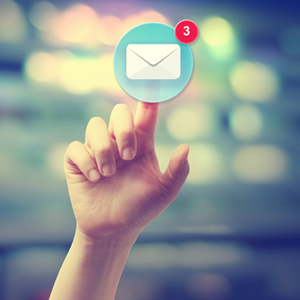Musicians are quick to deem social media the holy grail of their marketing efforts without realizing that they’ve overlooked one of the most effective techniques to develop a relationship with their audience: Email Marketing. With more than 4 billion users worldwide, email is the biggest source of online communication, which is more than double the amount of users than Facebook and Twitter combined. While you may be used to sending a quick tweet, taking the time to strategize email campaigns could significantly increase traffic to your videos.
Why You Should Utilize Email Marketing
Email marketing has a variety of benefits that can help you maximize your outreach while still establishing personal communication with your audience. Similar to a social media post, an effective email can reach an abundance of users with one click. However, its ability to stay relevant long outlasts the fleeting nature of social media. Instead of getting lost in newsfeeds, an overlooked email remains marked as unread, serving as an actionable reminder for its recipients. Furthermore, the content of your email can be designed more effectively than a social media post. The use of names, tailored subject lines, and individualized messages provides a more direct form of communication, driving more conversions than any other marketing channel. In order to take advantage of these benefits, here are 4 steps to get started:
Step 1: Collect a contact list
Before you can press send, the first step to email marketing is establishing a foundation of contacts that are likely to be receptive to receiving your content. The most effective strategy for acquiring a list of emails is providing fans or followers some type of value in exchange for their contact information. This most often takes the form of offering free content such as new music, free merchandise, or exclusive information on upcoming events. You can offer these incentives through a subscription form on your website, a sign-up sheet on the merchandise table at your next venue, or at the entrance of any venue you may perform at. Just remember that the quality of your contacts is more powerful than the overall quantity. Target an audience that you know likes listening to music, and to get even more specific, narrow that audience down to those who enjoy your genre of music.
Step 2: Create a template, establish a purpose
Once you’ve acquired your list of emails, you have to develop a template that will keep your messages consistent, clear, and organized. Your template should be organized so that the purpose of your email and action desired is apparent to your reader immediately. Effective hooks are concise and focus on providing some sort of value for your fans. You can further engage your audience by including photos or gifs your most recent videos in your email in order to entice them to click through. While the template of your emails should remain consistent so your users know what to expect, your content should be refreshing in order to continually peak the interest of your fans.
Step 3: Designing Your Subject Line
Your subject line is the most important factor in getting your subscribers to actually read your email. To get into the habit of choosing the most effective subject lines for your message, you can employ any of the following strategies.
- Keep it Simple– Straightforward subjects are useful if the offer you’re providing to your customer can speak for itself.
- Make it Personal– Personalized subject lines make your audience feel important, therefore they’re more inclined to open the email.
- Get Punny– A funny subject line will capture the attention of your reader, however, make sure your jokes align with your target market.
- Ask A Question- Using a question in the subject line forces them to consider an answer. This active participation naturally encourages the reader to engage, increasing the likelihood of their opening your email.
Step 4: Optimal Times to Send
You’ve finished creating a great email and now you’re ready to send it off, but when is the best time to send it? Studies show that the optimal times to send emails are on Tuesdays and Thursdays, at 10am or 8 pm. These times are just suggestions, please take into account the time zones your audience is in. Trial and error to test your email campaigns can help you determine exactly which time works best for you. Another obstacle of email marketing is figuring out the frequency of sending out your emails. The whole point of email marketing is to develop your relationship with fans, but do not make the mistake of over-emailing. You should send your emails a maximum of once a week or a minimum once a month in order to stay engaged with your audience.
It’s easy and beneficial to diversify your marketing approach by incorporating email. By utilizing these simple strategies, you will be able to share your latest video releases, upcoming events, or general news with your fans in an impactful yet personal way. Don’t forget to keep an eye out for our Vydia Spotlight newsletter to stay up-to-date with all Vydia news and promotions. Sign up below!
